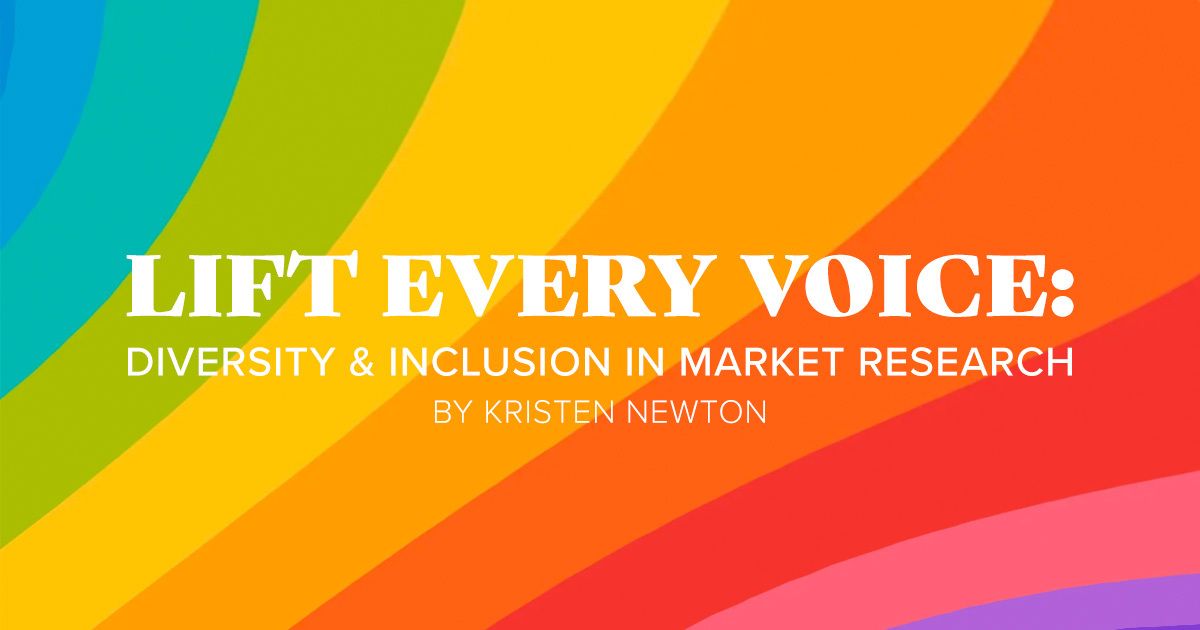Diversity comes in many forms—gender, race, ethnicity, religion, sexual orientation, age, culture, socioeconomic background, to name a few. All of these variables influence and contribute to how each of us uniquely experience the world.
Within these unique experiences exists a wealth of useful, even eye-opening information that can strengthen brands, improve the effectiveness of marketing and communications, target advertising campaigns, and inspire creativity and innovation. But when diversity isn’t taken into account, organizations can find themselves in serious trouble (H&M’s and Ancestry.com’s racially insensitive blunders come to mind). No one wants to be known for a lack of diversity and cultural awareness—or have to clean up a huge public relations mess that puts your brand in the spotlight for all the wrong reasons.
That’s why it’s crucial to incorporate diversity in your market research plans and research participant recruiting efforts. Typically, research occurs early in the project lifecycle. By building in diversity and inclusion upfront, you can be confident that you’ve given a variety of audiences the opportunity to voice their perceptions, opinions, and beliefs. Then, you can develop marketing strategies that incorporate these insights.
When it comes to planning your next market research project, how can you make sure you effectively address diversity? Here are five questions to ask as you create your research and participant recruitment methodology.
- Is the research topic one that is relevant and important to a diverse audience? And would research participants be comfortable sharing their thoughts and opinions in a research setting? If the topic is relevant and important but sensitive or controversial, consider your research methodology. For example, racially and ethnically diverse participants may be more comfortable with a focus group moderator who is also of their same race or ethnicity, or with doing one-on-one interviews vs. focus groups.
- Have you considered how race, ethnicity, gender identity, sexual orientation, etc., may impact your research findings? For example, some groups have a higher uncertainty avoidance index (UAI) than others. UAI measures the degree to which individuals are able to cope with uncertainty or ambiguity. Knowing that a particular group has a high UAI means that they may need to consult with family when making decisions, or may lean toward more traditional, conservative values. Conducting preliminary secondary research on your participant groups can provide this important contextual information. Also, think about how you structure your discussion guide questions when working with these participants—make sure your questions are crystal clear.
- Do your recruitment quotas reflect the diversity of the region under study and/or from which participants will be recruited? For example, in our research projects for Prince George’s County, we work hard to align quotas with the County’s population breakdown—that is, approximately 61% Black, 14% Hispanic/Latinx, 12% white, and 12% other races/ethnicities.
- Are your screeners, surveys, and discussion guides easily understood by and relevant to people of diverse backgrounds—including those who are less acculturated, speak English as a second language, are differently abled, or are not cisgendered? Don’t make the mistake of using confusing or inappropriate—or worse, offensive—language in these important research documents. If possible, have a diverse group of review them first and provide candid feedback.
- How can you make your participants feel as comfortable as possible about sharing their thoughts, feelings, and perceptions? It’s critical that you make participants feel respected and welcome to openly voice their opinions. Take a team approach to focus group moderation or interviewing, matching moderators and interviews to participants with the same background. If you don’t have diversity represented on your team, consider hiring a freelance multicultural moderator or interviewer.
As our world becomes increasingly more globalized and diverse, it’s more important than ever to “lift every voice” in our market research initiatives to make sure that our brands, messages, marketing, and advertising resonate with a broad sweep of the population.
Need help with your next market research effort? Contact LMD.

